You’ve probably experienced that jarring moment when bright overhead lights kill the mood during a movie night, or when your gaming setup feels disconnected from the intense action on screen. Your entertainment space doesn’t have to settle for static lighting that works against your activities. Adaptive lighting systems now use AI sensors to read your biometric data and automatically adjust brightness, color, and ambiance in real-time. But there’s more to reflect upon before transforming your space.
Understanding Adaptive Lighting Technology for Home Entertainment
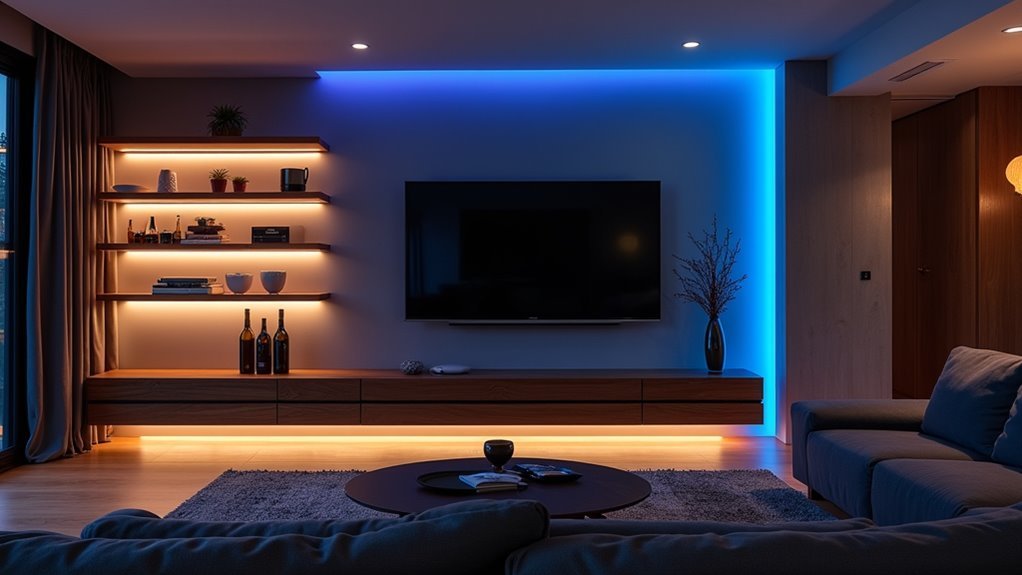
How can your living room lighting automatically adapt to create the perfect atmosphere for your favorite movie or gaming session?
Adaptive lighting technology transforms your home into sophisticated entertainment venues through AI-powered sensors that monitor your emotional cues and activities. This smart lighting system dynamically adjusts brightness, color temperature, and ambiance based on real-time data about your mood and behavior.
Machine learning algorithms analyze your patterns to predict lighting needs, delivering bright illumination when you need alertness during action scenes or softer tones for romantic comedies.
Systems like Philips Hue and LIFX let you control everything through smartphones and voice assistants. By reducing eye strain and improving visual comfort, adaptive lighting creates a more immersive, engaging experience that markedly boosts your emotional connection to entertainment.
Benefits of Emotion-Responsive Lighting in Entertainment Spaces
While traditional lighting simply illuminates a space, emotion-responsive lighting systems revolutionize your entertainment experience by creating dynamic environments that pulse with the rhythm of your feelings.
These AI-powered systems use sensors to detect your emotional cues and adjust brightness and color accordingly, transforming your smart home into an immersive sanctuary.
AI sensors read your emotions and instantly transform lighting into a personalized, immersive smart home sanctuary experience.
- Enhanced engagement – Real-time adaptations foster deeper emotional connections during movies, gaming, or social gatherings
- Reduced eye strain – Intelligent brightness adjustments let you enjoy longer entertainment sessions comfortably
- Improved mood regulation – Tailored configurations boost energy during action scenes or create a cozy atmosphere for romantic films
- Increased satisfaction – Personalized lighting experiences make every event feel specially curated for you
- Better perceived quality – Dynamic environments elevate ordinary entertainment into memorable experiences
Smart Sensor Integration for Automated Ambiance Control

The magic behind emotion-responsive lighting lies in sophisticated smart sensor networks that work invisibly throughout your entertainment space. These advanced systems analyze your biometric data, facial expressions, and body language to automatically adjust lighting conditions in real-time. You’ll experience seamless shifts from bright task lighting during gaming sessions to warm, dim ambiance for movie nights—all without touching a switch.
| Sensor Type | Data Collected | Lighting Response |
|---|---|---|
| Biometric | Heart rate, stress levels | Calming blue tones |
| Facial Recognition | Expressions, mood indicators | Warm/cool adjustments |
| Motion Detection | Activity patterns | Zone-based activation |
| Voice Analysis | Tone, energy levels | Brightness modulation |
| Environmental | Room occupancy | Energy optimization |
Smart integration with your existing home devices means you can customize preferences through voice commands or mobile apps, creating perfectly tailored atmospheres for any entertainment occasion.
Dynamic Color Temperature Adjustments Throughout the Day
You’ll transform your entertainment space by programming automatic color temperature shifts that energize you with bright, cool light during morning hours and shift to warm, relaxing tones as evening approaches.
This dynamic adjustment mimics natural sunlight patterns, boosting your alertness when you’re active and promoting relaxation when it’s time to unwind.
Your system can handle these shifts automatically through schedule programming, ensuring you always have the perfect lighting without manually adjusting settings throughout the day.
Morning Brightness Energy Boost
As dawn breaks and your day begins, adaptive lighting systems spring into action by delivering cool, blue-enriched light that mirrors the sun’s natural morning radiance.
This energizing illumination transforms your living room into a productivity powerhouse, whether you’re checking emails or planning movie nights for the weekend. The AI-powered technology learns your preferences and automatically adjusts brightness levels to combat morning drowsiness.
Research demonstrates these dynamic adjustments can boost your cognitive performance by 15% while enhancing mood throughout the day.
As we’ll explore further, morning brightness optimization creates the perfect foundation for your entertainment space.
- Cool, blue-enriched light mimics natural sunlight for maximum alertness
- AI technology learns and adapts to your personal lighting preferences
- 15% productivity increase documented in properly lit environments
- Automatic changes support your body’s natural circadian rhythms
- Enhanced cognitive performance and mood improvement throughout the day
Evening Warmth Relaxation Mode
While morning lighting energizes your space with cool tones, your entertainment area requires a completely different approach as evening approaches.
Evening Warmth Relaxation Mode automatically shifts your lighting from bright, cool temperatures to warm, soothing hues that promote relaxation and melatonin production.
This adaptive system mimics your natural circadian rhythms, eliminating manual adjustments while creating the perfect ambiance for winding down or hosting cozy movie nights.
You’ll notice improved sleep quality and overall well-being as warmer light temperatures prepare your body for rest.
Smart lighting integration optimizes energy efficiency by adjusting usage according to your daily schedule.
The seamless shift creates a calming atmosphere that enhances any evening activity, transforming your entertainment space into a sanctuary for relaxation.
Automatic Schedule Programming
Automatic schedule programming eliminates the guesswork from lighting management by seamlessly adjusting color temperatures throughout your entire day.
This intelligent feature transforms your entertainment space by syncing with your natural circadian rhythm, delivering cooler morning tones that boost alertness and gradually shifting to warmer evening hues that promote relaxation.
- Morning activation: Cooler, brighter light enhances mood and cognitive function for productive activities
- Midday optimization: Balanced lighting maintains energy levels during peak entertainment hours
- Evening adjustment: Gradual shift to warmer tones prepares your body for restful sleep
- Manual-free operation: Programming runs automatically without daily user intervention
- Energy efficiency: Smart scheduling optimizes power consumption based on actual lighting needs
You’ll experience enhanced comfort while reducing energy costs through this dynamic lighting approach.
Syncing Lighting With Screen Content and Audio
When you sync your lighting with screen content and audio, you transform passive viewing into an immersive sensory experience that pulls you deeper into the story. Dynamic backlighting responds to on-screen action, adjusting color and intensity to match every scene’s mood and tone.
| Content Type | Lighting Response | Audio Sync | Eye Strain Reduction | Control Method |
|---|---|---|---|---|
| Action Movies | Intense, rapid changes | Sound effect matching | High contrast balancing | Voice commands |
| Documentaries | Subtle, natural tones | Ambient music sync | Gentle ambient glow | Manual adjustment |
| Horror Films | Dark, dramatic shifts | Jump scare timing | Reduced brightness shock | Automated settings |
| Comedies | Warm, bright colors | Upbeat music response | Comfortable viewing | Smart app control |
| Dramas | Emotional color shifts | Dialogue enhancement | Balanced illumination | Scene recognition |
Smart systems like Philips Hue enable real-time customization, creating seamless alterations that enhance emotional connection while reducing eye strain during extended viewing sessions.
Creating Immersive Gaming Environments With Adaptive Illumination
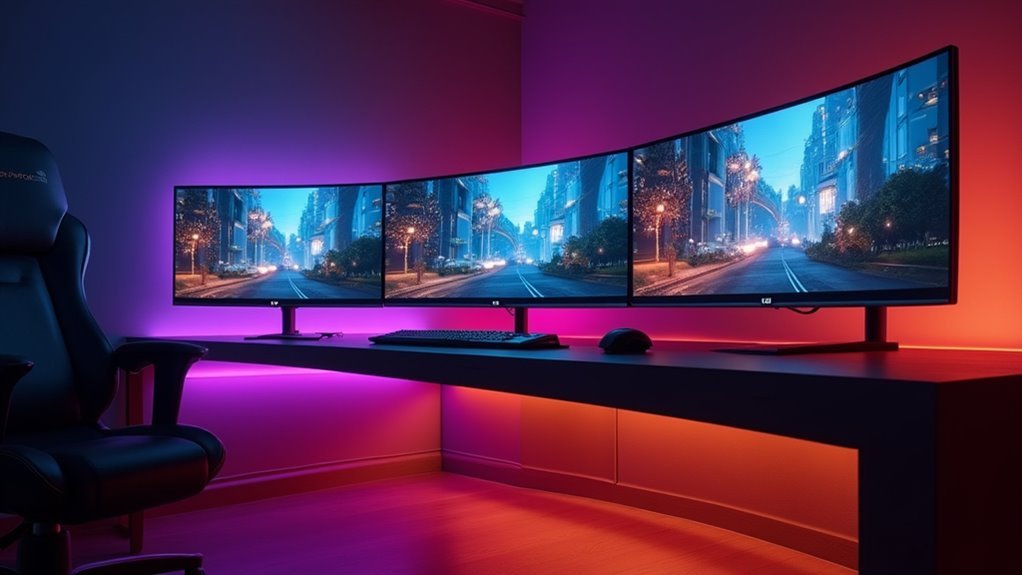
As modern gaming transcends traditional boundaries, adaptive illumination transforms your setup into a living extension of virtual worlds.
You’ll experience AI-driven lighting that responds to your emotional reactions, creating personalized atmospheres that evolve with gameplay intensity. Smart LED systems sync seamlessly with in-game actions, recreating cinematic effects that deepen your connection to digital narratives.
- Dynamic color shifts mirror health status, environmental changes, and combat situations
- Voice-controlled adjustments let you modify lighting without pausing gameplay
- Reduced eye strain during extended sessions improves comfort and focus
- Mobile app integration provides instant customization for different game genres
- Synchronized audio-visual effects amplify dramatic moments and environmental storytelling
These adaptive solutions don’t just illuminate your space—they immerse you in experiences where reality and virtual worlds blend through intelligent lighting design.
Optimizing Movie Night Experiences Through Intelligent Lighting
Transform your living room into a premium theater where intelligent lighting responds to every scene, emotion, and narrative beat of your favorite films.
Adaptive lighting systems synchronize with movie content, adjusting brightness and color tones to create an immersive atmosphere that enhances your visual experience.
Dynamic backlighting reduces eye strain and improves comfort during extended viewing sessions. The system automatically dims during intense action sequences while providing soft ambient light during quieter dialogue scenes, ensuring ideal visibility without distraction.
Voice control integration lets you adjust settings without interrupting the movie’s flow. You’ll appreciate the seamless experience as lighting responds intelligently to on-screen content.
Save personalized preferences for different genres—whether you’re watching horror, romance, or comedy—creating deeper emotional connections and enhanced engagement with every film.
Voice Control and App-Based Lighting Management Systems
Why fumble for physical switches when your voice can instantly alter your entertainment space’s atmosphere?
Voice control capabilities and app-based lighting management systems revolutionize how you interact with your lighting setup, delivering hands-free convenience and personalized control that enhances accessibility for everyone.
Transform your lighting experience with intuitive voice commands and smart app controls that put personalized ambiance at your fingertips.
Modern smart lighting systems seamlessly integrate with popular voice assistants like Amazon Alexa and Google Assistant, allowing simple voice commands to adjust any setting.
Through dedicated apps, you’ll gain complete control over color, brightness, and scheduling features.
Key benefits include:
- Scene memory – Save and recall specific lighting moods for different activities
- Remote access – Control lighting from anywhere to prepare for guests
- Personalized scheduling – Automate lighting changes throughout the day
- Quick activity switching – Instantly shift between movie mode and party settings
- Hands-free operation – Adjust lighting without interrupting your entertainment
Biometric Data Integration for Personalized Lighting Responses
Imagine lighting that reads your body’s signals and responds before you even realize you need a change. Biometric data integration in adaptive lighting systems monitors your emotional states through sensors that track heart rate and skin conductance.
When you’re stressed, the system automatically dims harsh lights and shifts to warmer tones. During relaxation, it creates a soothing ambiance that promotes comfort and reduces anxiety.
Machine learning algorithms analyze your biometric patterns to predict lighting preferences for different activities. Whether you’re working, socializing, or unwinding, the system adapts in real-time.
Research shows this personalized approach enhances mood and productivity, creating more enjoyable entertainment experiences. As biometric technology advances, future systems will offer even deeper personalization, adapting to your varying emotional states throughout the day.
Installing Smart LED Strips and Wireless Lighting Networks
You’ll want to start your smart lighting transformation by strategically placing LED strips along walls, ceilings, or furniture where they’ll create the most visual impact in your entertainment space.
Setting up a wireless lighting network comes next, allowing you to connect multiple devices that work together seamlessly through apps or voice commands.
This foundation gives you complete control over your lighting ecosystem while enabling future expansion as your smart home grows.
Smart Strip Installation
Three key components make smart strip installation straightforward: proper placement, reliable connectivity, and ecosystem compatibility.
You’ll find that most strips come with adhesive backing, eliminating the need for professional tools or complex mounting procedures.
Key installation considerations include:
- Strategic placement – Install strips along walls, furniture edges, or ceilings to maximize ambient lighting coverage
- Strong Wi-Fi signal – Ascertain your wireless network reaches installation areas for stable connectivity
- Ecosystem compatibility – Choose strips that work with your preferred platform (Google Assistant, Alexa, or HomeKit)
- Easy repositioning – Take advantage of adhesive backing to adjust placement without damage
- Mobile app integration – Configure wireless networks to enable smartphone and voice control functionality
This straightforward approach creates customizable entertainment lighting that enhances your space’s atmosphere.
Wireless Network Setup
Once you’ve positioned your smart LED strips, establishing a robust wireless network connection becomes your next priority. Confirm your router broadcasts a 2.4 GHz Wi-Fi signal, as most smart lighting devices operate exclusively on this frequency.
Download the manufacturer’s mobile app and follow the setup prompts to connect your strips to your network.
Position your LED strips within ideal range of your Wi-Fi router to maintain strong signal strength and responsive lighting performance. Distance considerably affects connectivity, so test the connection before finalizing strip placement.
Once connected, you’ll gain remote control capabilities and access to customization features through the app.
Remember to regularly update your strips’ firmware through the mobile application to access new features and critical security enhancements that protect your smart lighting network.
Programming Lighting Scenes for Different Entertainment Activities
When you’re setting up your entertainment space, programming lighting scenes alters how you experience different activities by creating perfectly tailored atmospheres at the touch of a button.
You can customize specific lighting configurations for various entertainment needs:
- Gaming sessions – Set bright, focused lighting that reduces eye strain and enhances visibility.
- Movie nights – Create soft, warm tones that won’t distract from on-screen content.
- Sports viewing – Program energizing, dynamic lighting that matches the excitement.
- Music listening – Design ambient lighting that complements different musical moods.
- Reading time – Configure ideal brightness levels for comfortable extended reading.
Your adaptive lighting system learns your preferences through machine learning algorithms, automatically adjusting brightness and color temperature based on time of day and activity.
Smart lighting adapts to your daily routines, automatically fine-tuning ambiance as it learns your entertainment preferences over time.
You’ll activate these pre-defined scenes instantly using voice commands or mobile apps, ensuring seamless shifts between entertainment modes.
Troubleshooting Common Adaptive Lighting System Issues
Several technical hiccups can disrupt your adaptive lighting system’s performance, but most issues stem from sensor misalignment, connectivity problems, or outdated software.
Start by checking that all sensors are properly calibrated and positioned to accurately detect emotional cues—misalignment leads to ineffective lighting adjustments.
Next, verify your Wi-Fi connectivity, as unstable connections hinder adaptive capabilities.
Keep your system’s software updated to access the latest features and performance fixes. If your lighting doesn’t respond appropriately to emotional cues, reset the system to factory settings and reconfigure it to eliminate software glitches.
When encountering specific error messages, consult your manufacturer’s troubleshooting guidelines. They’ll provide tailored solutions based on your adaptive lighting model’s unique requirements and specifications.
Privacy Considerations and Data Security in Smart Lighting
When you install adaptive lighting in your entertainment space, you’re fundamentally inviting data collection devices that monitor your facial expressions, emotional responses, and behavioral patterns to enhance the lighting experience.
Your smart lighting system gathers this biometric information through cameras, sensors, and AI algorithms that analyze how you react to different lighting scenarios during movies, gaming, or social gatherings.
You’ll want to understand exactly what data your system collects and guarantee you maintain control over how that personal information is stored, shared, and used by manufacturers.
Data Collection Methods
While adaptive lighting systems promise personalized experiences in entertainment spaces, they collect intimate data about your emotional states through facial recognition cameras, motion sensors, and biometric monitors that track everything from your heart rate to micro-expressions during movies or gaming sessions.
These sophisticated data collection methods include:
- Facial expression analysis – Cameras detect mood changes, stress levels, and engagement patterns
- Body language monitoring – Sensors track posture shifts, movement frequency, and physical responses
- Biometric feedback capture – Heart rate variability, skin temperature, and breathing patterns
- Environmental interaction data – Usage patterns, preferred settings, and activity duration
- Voice pattern recognition – Emotional tone analysis during conversations or reactions
Understanding these collection methods helps you make informed decisions about your privacy while enjoying personalized lighting experiences.
User Control Options
Although adaptive lighting systems collect extensive personal data, you retain significant control over your privacy through thorough user management features.
You’ll find thorough privacy settings within your smart lighting interface, allowing you to limit data sharing or completely opt-out of features requiring personal information. Most systems offer granular controls where you can customize which data gets collected and how it’s used.
You can typically adjust these settings through mobile apps or voice commands, maintaining full autonomy over your lighting preferences.
Many manufacturers provide clear data policies explaining exactly how your information is collected, stored, and utilized. This transparency enables you to make informed decisions about your privacy while still enjoying personalized lighting experiences in your entertainment space.
Future Trends in AI-Powered Entertainment Lighting Systems
As entertainment venues continue embracing cutting-edge technology, AI-powered lighting systems are poised to transform how you’ll experience concerts, theaters, and immersive attractions.
These intelligent systems will anticipate your preferences and adapt in real-time to create unprecedented personalization.
Future developments you’ll encounter include:
- AR-integrated lighting that responds instantly to audience engagement and feedback
- Machine learning algorithms that analyze demographic data to match your emotional and sensory needs
- Predictive systems that learn your routines and preferences for seamless ambiance control
- Sustainable automation that adjusts brightness and color temperature based on occupancy and time
- Biometric responsiveness that tailors experiences while maintaining transparent privacy policies
These advances promise more immersive, efficient, and personalized entertainment experiences.
Frequently Asked Questions
What Is Adaptive Lighting in Apple Home?
Adaptive Lighting automatically adjusts your smart lights’ color temperature and brightness throughout the day. You’ll get bright, alert lighting during daytime and softer, relaxing tones in the evening without manual adjustments.
What Are the Benefits of Adaptive Lighting?
You’ll experience reduced eye strain and improved mood as adaptive lighting automatically adjusts to your activities. It enhances entertainment immersion, eliminates manual adjustments, and creates personalized environments that boost comfort and engagement.
What Is an Adaptive Lighting System?
An adaptive lighting system uses AI and sensors to automatically adjust your lighting by analyzing your emotions, activities, and biometric data. It eliminates manual controls, creating personalized lighting that responds to your needs in real-time.
How to Use Adaptive Lighting?
Install smart LED strips with motion sensors, then use mobile apps to customize lighting modes for different activities. You’ll adjust colors and intensities automatically based on time of day and your current mood or tasks.

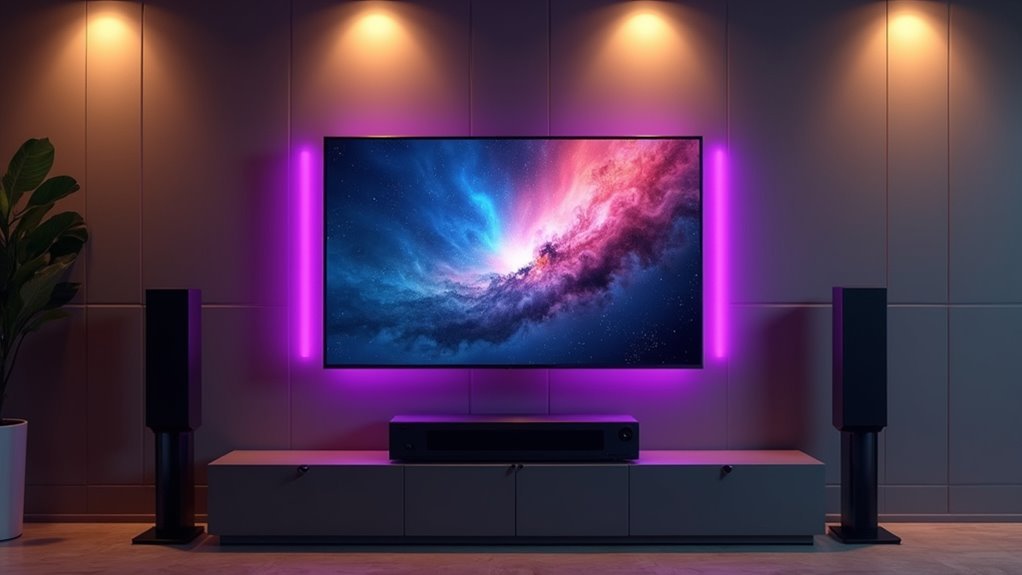
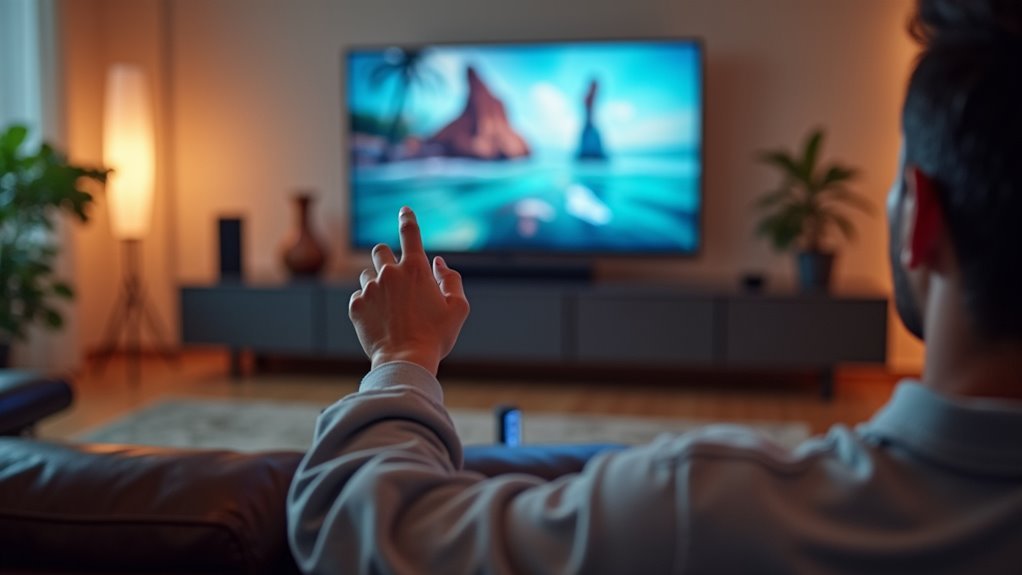
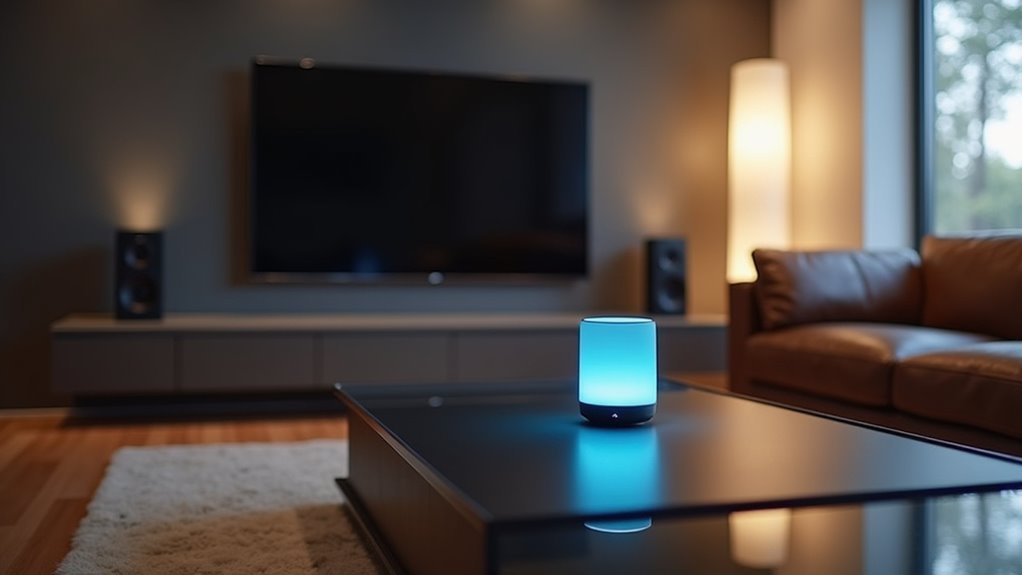

Leave a Reply